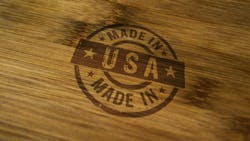To reshore or not to reshore? Deciding when the time is right
By Chip Barth, managing director, TBM Consulting’s global supply chain practice
Disruptions to the global supply chain in recent years have prompted many manufacturers to analyze the pros and cons of reshoring the production of critical components. Perhaps you are one of them. As we approach the midpoint of 2023, with tensions still flaring in Asia and the war in Ukraine in its second year, manufacturers are increasingly concerned about the long-term durability of the global supply chain, and many are making the move to reshore production.
“With increasingly unfavorable supply chains and softer demand, the economics of once-profitable sales may have changed," read the PwC, 2023 Trends in Private Equity Report. "Companies that fail to keep up with the impact of input cost changes, and those that get stuck with under-leveraged costs, will likely struggle. The companies that succeed will likely be the ones that know and actively manage the profitability of each of their product and service offerings.”
Key considerations
In most cases, the decision on whether to reshore revolves around the impact such a change would have on the core competitive requirements of cost, cash, and/or delivery, and whether a homecoming would help accelerate market-share gains. While every business situation is unique, we have observed some common considerations that should be on management checklists when making this important decision.
- The reliance of the business on imported components. For businesses of all types, their level of dependence on foreign-manufactured goods almost always comes down to price, with offshoring typically offering a distinct cost savings. In recent years (particularly during the pandemic) that price advantage has steadily been eroded by the increased complexity of global supply chains. For some companies, the higher costs associated with reshoring are more palatable, given the added flexibility and diminished disruptions domestic production can provide.
- Finding the key pain points. As companies adjust their supply chains to meet competitive requirements, a thorough internal review can help identify the critical components that regularly impact production. The goal is to zero in on components that regularly increase lead times due to shortages or delays, and to potentially reshore their production. In the process, business leaders may discover that some of the best candidates for reshoring include any component coming from overseas that is subject to Section 301 Tariffs or that sees dramatic shifts in demand, as well as any products with a high freight-cost-to-labor-cost ratio.
- Think bigger picture. Supply chain decisions have historically been based on freight-on-board or free-on-board (FOB) price or landed cost. In the current environment, however, manufacturers need to think more holistically and consider any factors affecting the P&L and balance sheets. These include geopolitical risks, delays and stock outs, and the costs of carrying extra safety stock or poor-quality stock.
- Consider the value of ‘Made in the USA’. In weighing the advantages of reshoring, decision-makers should also consider the value of a ‘Made in the USA’ label on their products, as well as the environmental and social benefits of manufacturing closer to home.
Returning home isn’t always easy
Businesses also need to realize that a return home won’t be accomplished overnight. This is not a simple flip of the switch. As RSM warned in a recent report, complex offshore manufacturing clusters built over 20 to 30 years will not be easy to unwind. The multi-year shift of moving manufacturing overseas has left a deep imprint on the US labor market. Businesses will need to ensure they have the human-capital resources in place to guarantee reshoring success.
As companies look to bring production back to the US, they will need to consider whether a local facility has the capacity to cost-effectively handle production. In most cases, manufacturers should not expect to reshore without investing in process improvements. Also, in cases where there is a shortage of workers, automation will likely be part of the solution.
Additionally, as companies invest in new facilities, equipment, and training, they should not only look to increase capacity and efficiency, but also consider creating physical spaces that employees view as a great place to work every day.
Measuring success
The Reshoring Institute estimates that most companies can reshore approximately 20% of the products they currently import, eliminating a great deal of supply chain risk without negatively impacting profitability.
As businesses evaluate reshoring, they will also need more robust data and a better understanding of their true costs to accurately gauge and measure the benefits of bringing manufacturing back home. Costs, risks, inventory turns, productivity impacts, service levels, and even the larger environmental and social implications of reshoring should be factored into the equation.
In today’s climate, it’s imperative to rethink supply chains. The current geopolitical risks aren’t going away anytime soon, and significant new events could very well come along. Establishing alternative supply chain processes, including reshoring, makes businesses more flexible and can serve as an insurance policy of sorts by helping to counterbalance inevitable disruptions.
Additional Resources
Publicly available resources, such as the Reshoring Institute’s TCO estimator, can help determine if reshoring makes financial sense. The industry group’s TCO estimator helps manufacturers account for all relevant considerations—overhead, balance sheet risks, corporate strategy—to help make the financial case for reshoring. Based on this tool, company input data, and its own algorithm, the Reshoring Institute has found that certain items can be made more profitably in the US than in China.
